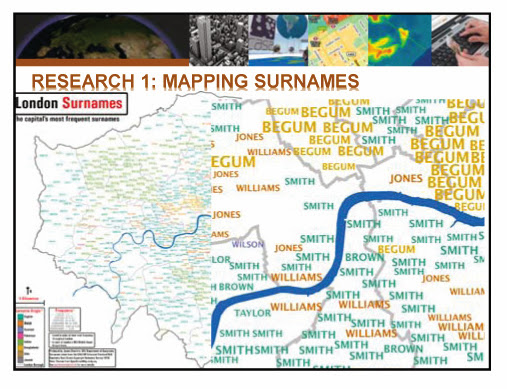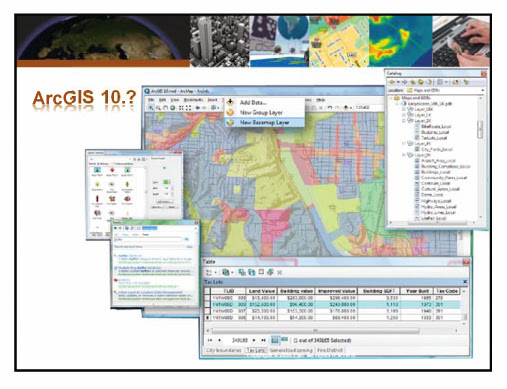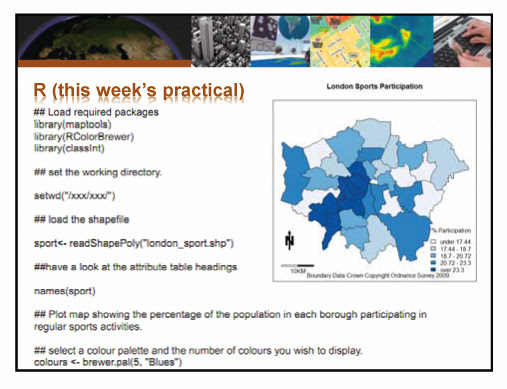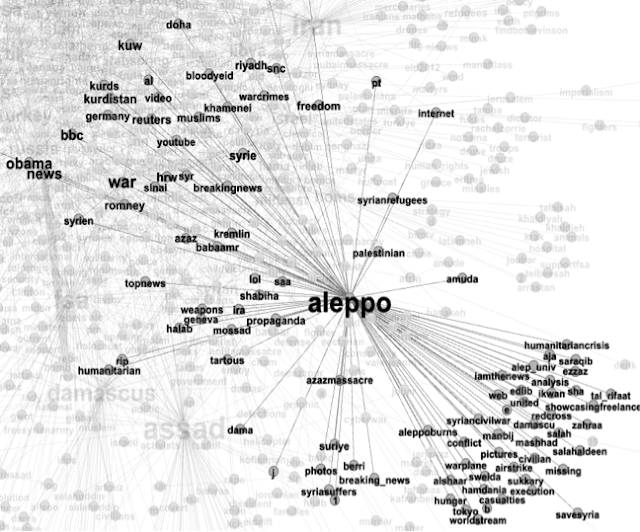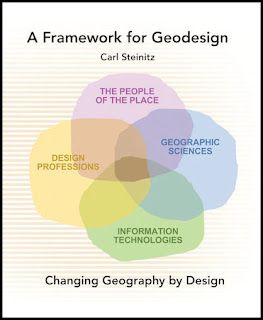
“People have designed and changed the geography of their landscapes for thousands of years, for the better or for the worse. But with more pressure being placed on the world’s resources, with increasing numbers of people, the question that we are now faced with is, what are the best sustainable design solutions to mitigate these challenges? For example, urban growth is inevitable given the increasing concentration of people living within in cities, and as a trend is expected to continue into the foreseeable future. The question that designers and planners are therefore faced with is what scenarios would lead to say the least amount of loss in biodiversity. But this is a multi-faceted problem ranging in scale from how do people build there homes, to where should new industry be located, or how should land be conserved etc? These are all questions involving spatial decision-making, and where geographic information systems can play an important role. Over the last forty years, geographic information systems (GIS) have increasingly been used to assist in such complex decisions, from modelling urban growth projections through to assessing the spread of pollution (see Longley
et al., 2010 for a extensive list of applications). However, one of the original visions for GIS, which is often overlooked, is that of a tool for design (Goodchild, 2010).
In his book “A Framework for Geodesign: Changing Geography by Design” Karl Steinitz brings his vast experience as a landscape architect and planner to such an issue. For those not familiar to the term geodesign, Steinitz (2012) writes in his preference to the book that it “is an invented word, and a very useful term to describe an activity that is not the territory of any single design profession, geographic science or information technology” (p ix). More generally Steinitz (2012) frames geodesign as “the development and application of design-related processes intended to change the geographical study areas in which they are applied and realised” (p1). Or another way of putting it, the merging of geography and design through computers. This is reiterated later on by a quote from Michael Flaxman were he states “Geodesign is a design and planning method which tightly couples the creation of design proposals with impact simulations informed by geographic contexts, systems thinking, and digital technology” (Flaxman quoted in Steinitz, 2012 p 12).
Moreover, geodesign can be considered both as a verb and as a noun which Steinitz relates to design more generally (see Steinitz, 1995). In the sense as a verb, geodesign is about asking questions and as a noun, geodesign is the content of the answers. In this book Steinitz not only clears up the meaning of geodesign but more importantly provides a comprehensive framework (based on his past work) for thinking about strategies of geodesign, and for organising and operationalizing these meanings.
The book is made up of twelve chapters and split into four parts. The first part is spent on framing geodesign and to set the scene for the remainder of book. For example, chapter 1 notes that for geodesign to be successful, one requires collaboration between the design professions (e.g. architects, planners, urban designers, etc.), geographical sciences (e.g. geographers, ecologists, etc), information technologies and those people living within the communities where geodesign is being applied. This is reiterated throughout the book. Chapter 1 also traces the history of geodesign, and how the advent of computer methods for the acquisition, management and display of digital data can be used to link many participants, thus making design not a solitary activity. Chapter 2 introduces the reader to the context for geodesign in the sense that 1) geography matters and that different societies think differently about their geography, 2) scale maters in the sense of what scale should a geodesign project be applied at (e.g., local, regional or global), and what are the appropriate considerations that need to incorporated at each scale, and finally 3) size matters, if the size of the geographic study area increases, there is a high risk of a harmful impact if one makes a mistake.
Part 2 of the book lays out a framework for geodesign. It is important to note that Steinitz does not call this a methodology for geodesign, as he argues one cannot have a singular methodology as the approaches, principles and methods are applied to projects across a range of geographies, scales and sizes. He therefore introduces a framework as a verb, specifically for asking questions, choosing among many methods and seeking possible answers. In order to develop this framework Steinitz walks the reader through six different questions and types of models common in geodesign projects.
Chapter 3 focuses on components of the framework and the questions one needs to address for a successful geodesign project. These questions broadly range from: 1) How should the study area be described? 2) How does the study area operate? 3) Is the current study area working well? 4) How might the study area be altered? 5) What differences might the changes cause?, and finally, 6) How should the study area be changed? As posed by Steinitz, these questions are not a linear progression, but have several iterative loops and feedbacks both with the geodesign team and the application stakeholders. Moreover, Steinitz argues that such questions should be asked three times during the geodesign study, the first to treat them as why questions (e.g. to understand the geographic study area and the scope of the study). Secondly, the questions are asked in reverse order to identify the how questions (e.g. to define the methods of the study, therefore geodesign becomes a decision rather than data driven process) and finally, the questions are asked in sequential order to address the what, where and when questions as the geodesign study is being implemented. Once these three iterations are complete, there can be three possible decisions, yes, no and maybe. If maybe or no, more feedback is needed between the geodesign team and the stakeholders. These iterations highlight how geodesign is an on-going process of changing geography by design.
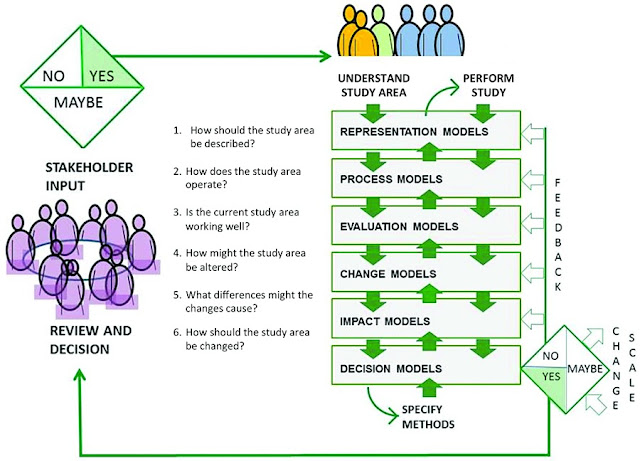
Using this framework, Chapter 4 discusses the first iteration of questions, that of scoping the geodesign study. The emphasis of this iteration is ensuring that it is being decision-driven as opposed to data-driven. Moreover, it goes over the six questions in an attempt to identity the intended scope for the study before looking at a feasible methodological plan. Chapter 5, moves onto the second iteration, that of designing the study methodology. Having identified the scope of the study (the why) from the first iteration, the geodesign team must then explore how it will be carried out and what are the evaluation criteria. Chapter 6 discusses the third iteration, that of carrying out the geodesign study. That of the what, where and when questions. Throughout these chapters, Steinitz reiterates the need for stakeholder input and feedback from the geodesign team. Moreover, at the end of chapter 6, Steinitz reiterates that the choices mater. The why questions provide a sense of the scope and objectives of the design application: the problem, the study area and those scales required for operationalizing a successful project.
Part 3 of the book looks at nine case studies in geodesign from around the world. Ranging in temporal scale from days to years, from no financial budget to a large budget, and from a small to large numbers of participants. These case studies helped solidify many of the concepts identified in the preceding chapters. They range from urban growth, to urban change to that of fire management. The case studies focus on specific places and utilize GIS with a variety of different techniques, from anticipatory modelling to that of participatory modelling and rule based models (e.g. cellular automata). They also show the importance of visualisation, as Steinitz (2012) notes “spatial visualisation can significantly influence decision making” (p 168). These examples have details but not depth (however, references are given to the full case study report), but this reiterates the purpose of the book, in the sense it is not a “how to” textbook or listing technologies that enable geodesign. It is a discussion with examples of geodesign. Or to quote from the last page of the book “you cannot copy an example but you can gain experience by joining the collaborative activities of geodesign and changing geography by design” (Steinitz, 2012, p 201). The same goes for the applications, they give a valuable insight into what is possible with geodesign. The book concludes by discussing the future applications for geodesign which range from looking at the implications for research in geodesign, and sketching out a geodesign support system (see Ervin, 2011); and in a sense, one could relate this to other planning support systems (see Brail, 2008), but with a greater emphasis on design.
Overall the book is extremely well written and Steinitz provides a critical and personal account of geodesign, which shows his expertise in the area from his years of teaching and carrying out geodesign work. The use of figures and real world examples really helps support the discussion. But if you are looking for a textbook for “how to” do geodesign, or a list of technologies that enable geodesign, you need to look elsewhere. This is a book the principles and practice of geodesign in a general sense, and which provides a valuable resource for those interested in this topic.”
References:
Brail, R.K. (ed.) (2008), Planning Support Systems for Cities and Regions, Lincoln Institute of Land Policy, Cambridge, MA.
Ervin, S. (2011), ‘A System for GeoDesign’, Proceedings of Digital Landscape Architecture, Anhalt University of Applied Science, Dessau, Germany, pp. 145-154.
Goodchild, M.F. (2010), ‘Towards Geodesign: Repurposing Cartography and GIS?.’ Cartographic Perspectives, 66(7-22).
Longley, P.A., Goodchild, M.F., Maguire, D.J. and Rhind, D.W. (2010), Geographical Information Systems and Science (3rd Edition), John Wiley & Sons, New York, NY.
Steinitz, C. (1995), ‘Design is a Verb; Design is a Noun’, Landscape Journal, 14(2): 188-200.
Steinitz, C. (2012), A Framework for Geodesign: Changing Geography by Design, ESRI Press, Redlands. CA.
Full reference to the book:
Review of Steinitz, C. (2012), A Framework for Geodesign: Changing Geography by Design, ESRI Press, Redlands. CA.
Full reference to the review:
Crooks, A.T. (2013), Crooks on Steinitz: A Framework for Geodesign: Changing Geography by Design, Environment and Planning B, 40 (6): 1122-1124.
Continue reading »


















